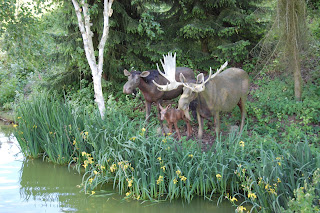At the heart of the Thunder Mesa story (and literally in the center of Frontierland at Disneyland Paris) is the Big Thunder Mining Co. The fortunes of the town, and specifically the mine's owner Henry Ravenswood, were built on the discovery of a vein of gold under Big Thunder Mountain. Everything was fine, as long as the mining work stuck close to shore. When miners dug tunnels under the river, though, to get to Big Thunder itself, they were met with one calamity after another... culminating in the great earthquake of 1860.
Following the quake and Ravenswood's untimely death, the mine was deserted. Some believe the mine to be cursed, owing to the Native American legend of a Thunderbird that beats its wings and causes the earth to tremble whenever its riches are disturbed.
The rocky buttes and mesas of Big Thunder Mountain in Paris, just like those in the other Disney Parks, owe their inspiration to the landmarks of Monument Valley, Utah (Big Thunder at Disneyland is styled somewhat differently, after the hoodoos of Bryce Canyon).
The entrance to the attraction here is also quite similar, complete with the lift tower over the mine shaft.
Once you board your runaway train, though, things take a very different turn. Heading out of the station, the train twists right and travels rapidly beneath the river to emerge on the other side. The return trip is even more thrilling, as your train rockets back through the tunnel to escape an avalanche.
All along the way are loads of genuine antique railroad and mining equipment, gathered from across the country by the Imagineering team who built the attraction. After dressing the sets of three other Big Thunder Mountain Railroads, you'd think all the period mining equipment in the country would have already been found and used, but you'd be wrong. In fact, they discovered some fairly unique pieces for the French version of the attraction.
I especially appreciate unique items, like these scales re-purposed as frames for attraction warning signs or the gorgeous steam tractor, which Frontierland lead designer Pat Burke discovered on a Missouri farm.
Of course, I'm also a sucker for fully integrated storytelling, and Frontierland at Disneyland Paris has that in spades. There are big connections, like the owner of the Big Thunder Mine being a key player in the story of Phantom Manor, and then there are the more subtle ties.
The sign above, posted near a tool workshop area at Big Thunder, refers people to "see Lavinia at Rose's." If you saw this, you might not think anything of it... at least not until you explore more of neighboring Frontierland. There you'll find Rose's Blacksmith Shop, operated by none other than Lavinia Rose, who inherited the business from her father Jedediah.















































